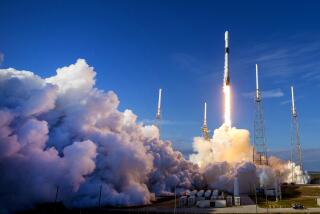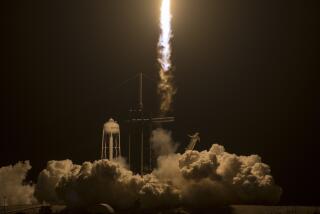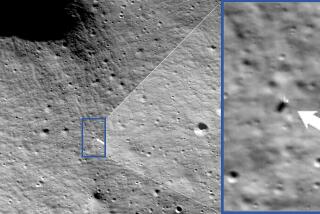Balloon-Based Science Probe Damaged in Landing
- Share via
SHOW LOW, Ariz. — A 2 1/2-ton experimental NASA probe crashed and sustained about $2 million in damage when a wind gust foiled its landing.
Dozens of batteries and electronic devices were strewn on the ground at the landing site, said Jack Tueller, a scientist with the National Aeronautics and Space Administration, who helped build the probe.
NASA engineer Al Huters said the probe cost between $2 million and $3 million to build. He said the device rides on a steel gondola about 10 feet square and is carried aloft by a helium-filled balloon.
The probe, used to measure radioactivity in the upper atmosphere, had made two successful experimental flights over Australia in 1988, officials said. A wind gust apparently caught it as it touched down Friday in eastern Arizona.
“It was supposed to land very softly,” Tueller said. “In the two landings in Australia, there was very little damage.”
The probe can measure faint emissions from stars and “was putting us on the cutting edge of astronomy,” Tueller said.
The gamma-ray imaging spectrometer is one of two in the world, Tueller said. The other belongs to UC San Diego.
It was launched Thursday from an airport at Ft. Sumner, N. M., and reached an altitude of more than five miles.
More to Read
Sign up for Essential California
The most important California stories and recommendations in your inbox every morning.
You may occasionally receive promotional content from the Los Angeles Times.










